Complete Solutions to LEVEL II(H.W) of chapter CIRCULAR MOTION of Class 11 book with complete answers and questions
| Class 11 | PHYSICS |
| Chapter | CIRCULAR MOTION |
| NARAYANA | LEVEL II(H.W) |
| Number Of Questions | 51 |
| Academic Year | 2023-24 |
A ball of mass 0.2 kg is thrown vertically upwards by applying a force by hand. If the hand moves 0.2 m while applying the force and the ball goes upto 2 m height further, find the magnitude of the force. (Consider `g=10m//s^2`).
View SolutionA body of mass `3 kg` is moving alone a straight line with a velocity of `24ms^(-1)`.When it is at a point `P` a force of `9 N` acts on the body in a direction opposite to its motion.The time after which it will be at `P` again is.
View SolutionA rubber ball of mass 50 g falls from a height of 5m and rebounds to a height of 1.25 m. Find the impulse and the average force between the ball and the ground if the time for which they are in contact was `0.1s`

View SolutionA stream of water flowing horizontally with a speed of `15 ms^(-1)` pushes out of a tube of cross sectional area `10^(-2)m^(2)` and hits a vertical wall near by what is the force exerted on the wall by the impact of water assuming.that it does not rebound? (Density of water `=1000 kg m^(3)`)
View SolutionWhat is the magnitude of the total force on a driver by the racing car he operates as it accelerates horizontally along a straight line from rest to `60m//s` in `8.0s` (mass of the driver`=80kg`)
View SolutionA base ball of mass `150 gm` travelling at speed of `20 m//s` is caught by a fielder and brought to rest in `0.04s`.The force applied to the ball and the distance over which this force acts are respectively
View SolutionA dynamometer `D` is attached to two blocks of masses `6 kg` and `4 kg`.Forces of `20 N` and `10 N` are applied on the blocks as shown in Fig. The dynamometer reads

View SolutionA particle of mass m moving with velocity u makes an elastic one-dimentional collision with a stationary particle of mass `m`. They come in contact for a very small time `t_0`. Their force of interaction increases from zero to `F_0` linearly in time `0.5t_0`, and decreases linearly to zero in further time `0.5t_0` as shown in figure. The magnitude of `F_0` is

View SolutionFigure shows the position-time graph of a particle of mass `0.04kg`. Suggest a suitable physical context for this motion. What is the time between two consecutive impulses received by the particle? What is the magnitude of each impluse?
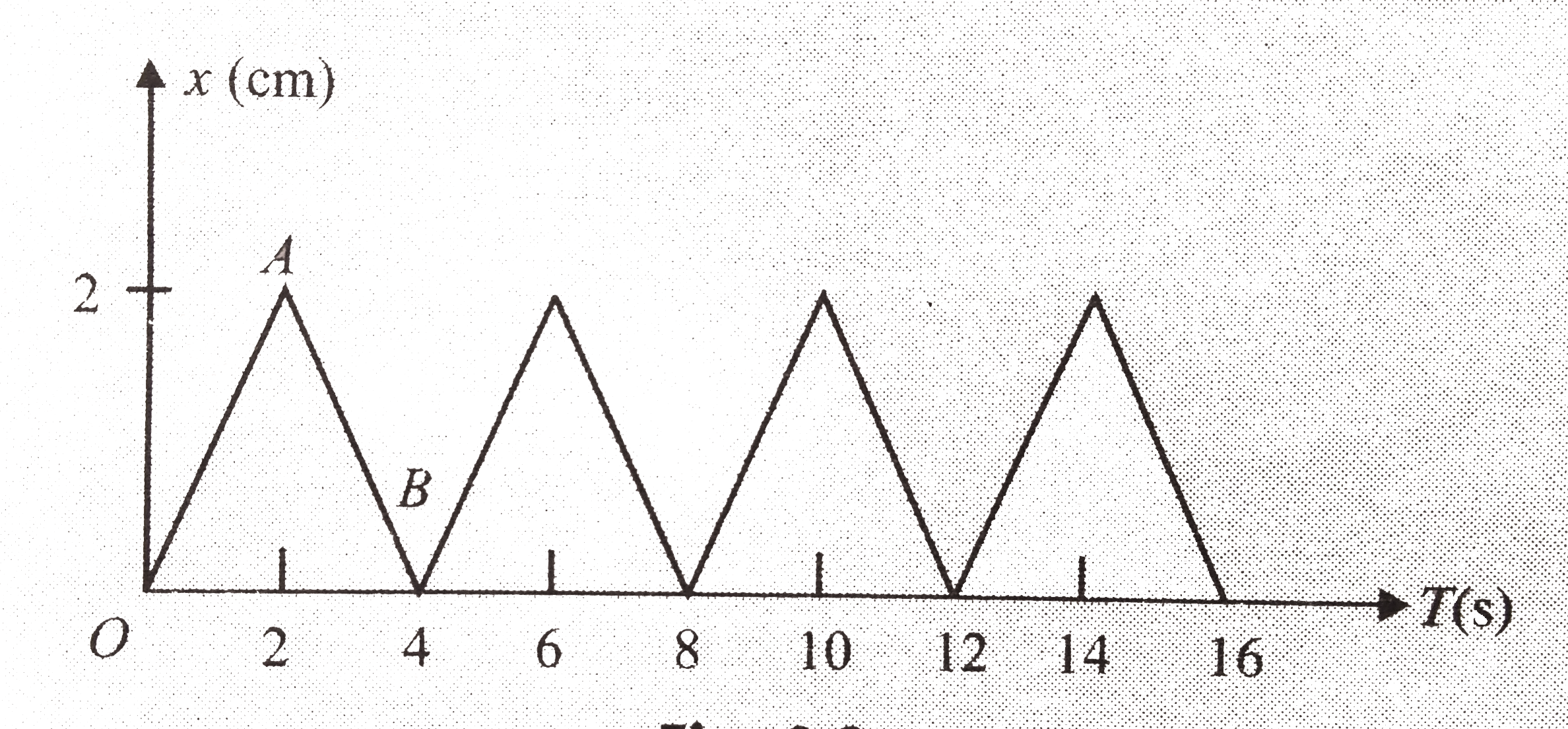
View SolutionThe elevator shown in fig. is descending with an acceleration of `2ms^(-2)`. The mass of the block `A=0.5kg`. Find the force (in Newton) exerted by block A on block B.
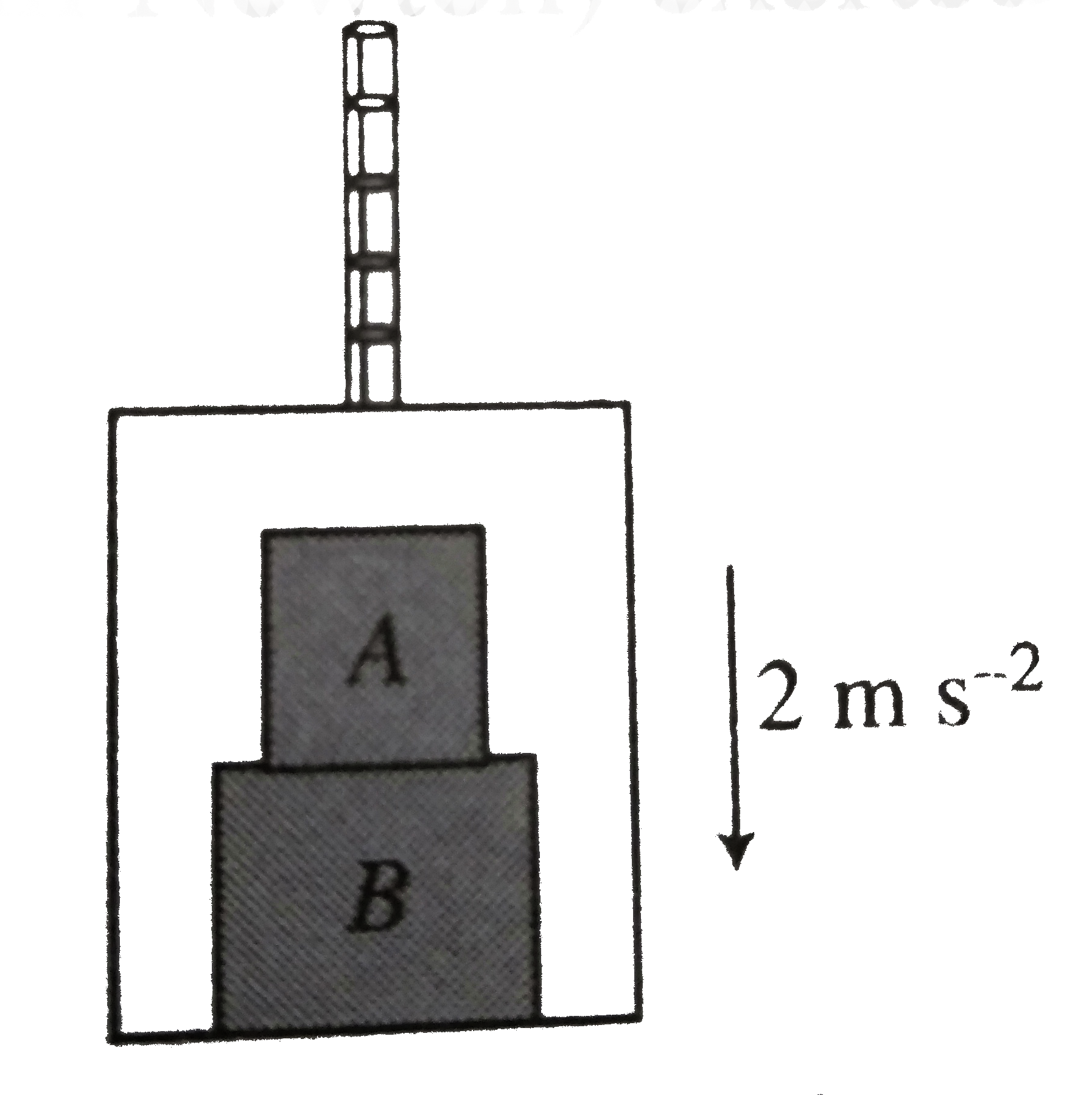
View SolutionA block of mass `m` is pulled by a uniform chain of mass `m` tied to it by applying a force `F` at the other end of the chain.The tension at a point `P` which is at a distance of quarter of the length of the chain from the free end,will be

View SolutionTwo masses of `8 kg` and `4 kg` are connected by a string as shown in figure over a frictionless pulley.The acceleration of the system is

View SolutionConsider the system as shown in the figure. The pulley and the string are light and all the surfaces are frictionless. The tension in the string is `(g=10m//s^(2))` .

View SolutionTwo masses of 1kg and 5kg are attached to the ends of a massless string passing over a pulley of negligible weight. The pulley itself is attached to a light spring balance as shown in figure. The masses start moving during this interval, the reading of spring balance will be:
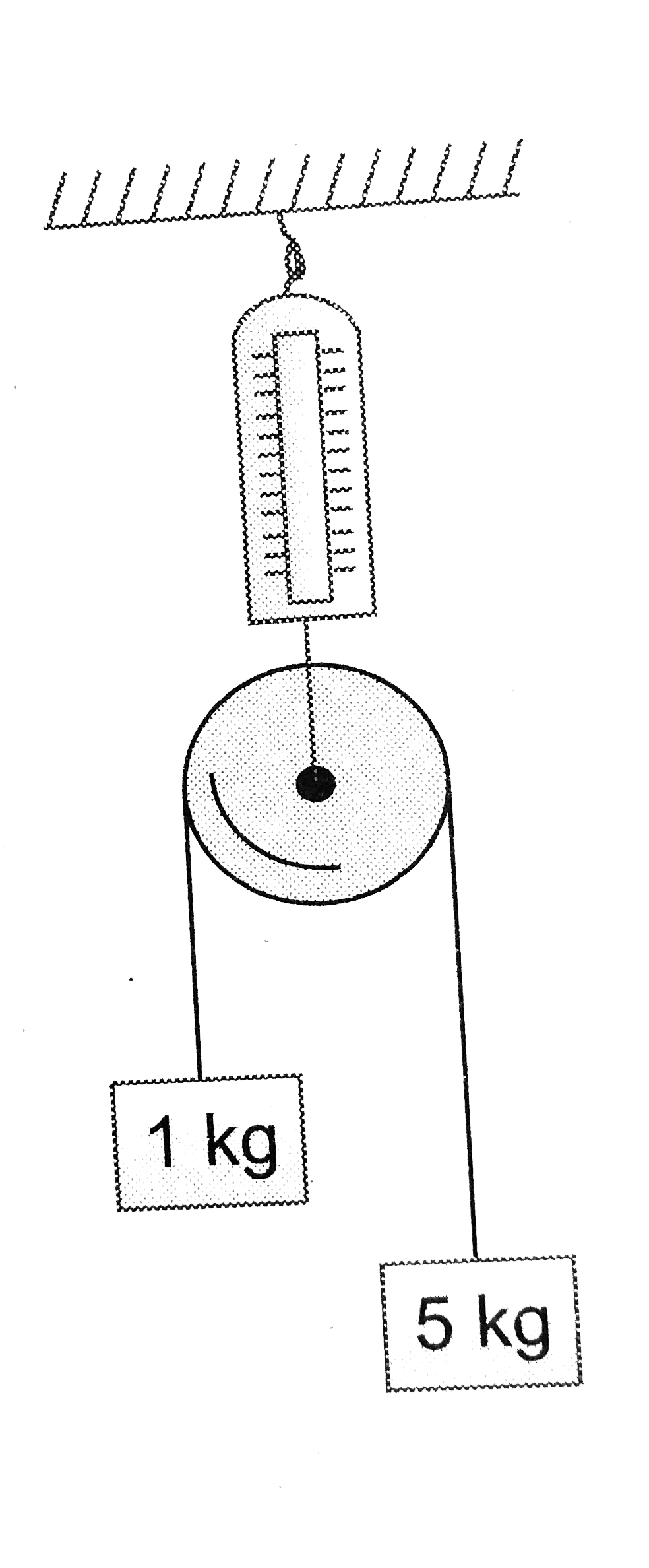
View SolutionA chain consisting of `5` links each of mass d `0.1 kg` is lifted vertically up with a constant acceleration of `2.5m//s^(2)`.The force of interaction between `1st` and `2nd` links as shown
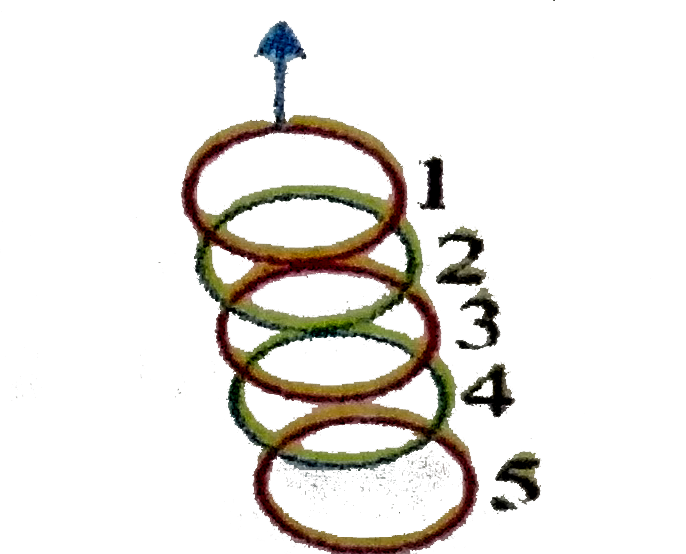
View SolutionThree blocks of equal masses (each `3kg`) are suspended by weightless strings as shown. If applied force is `100N`,then `T_(1)` is equal to `(g=10m//s^(2))`
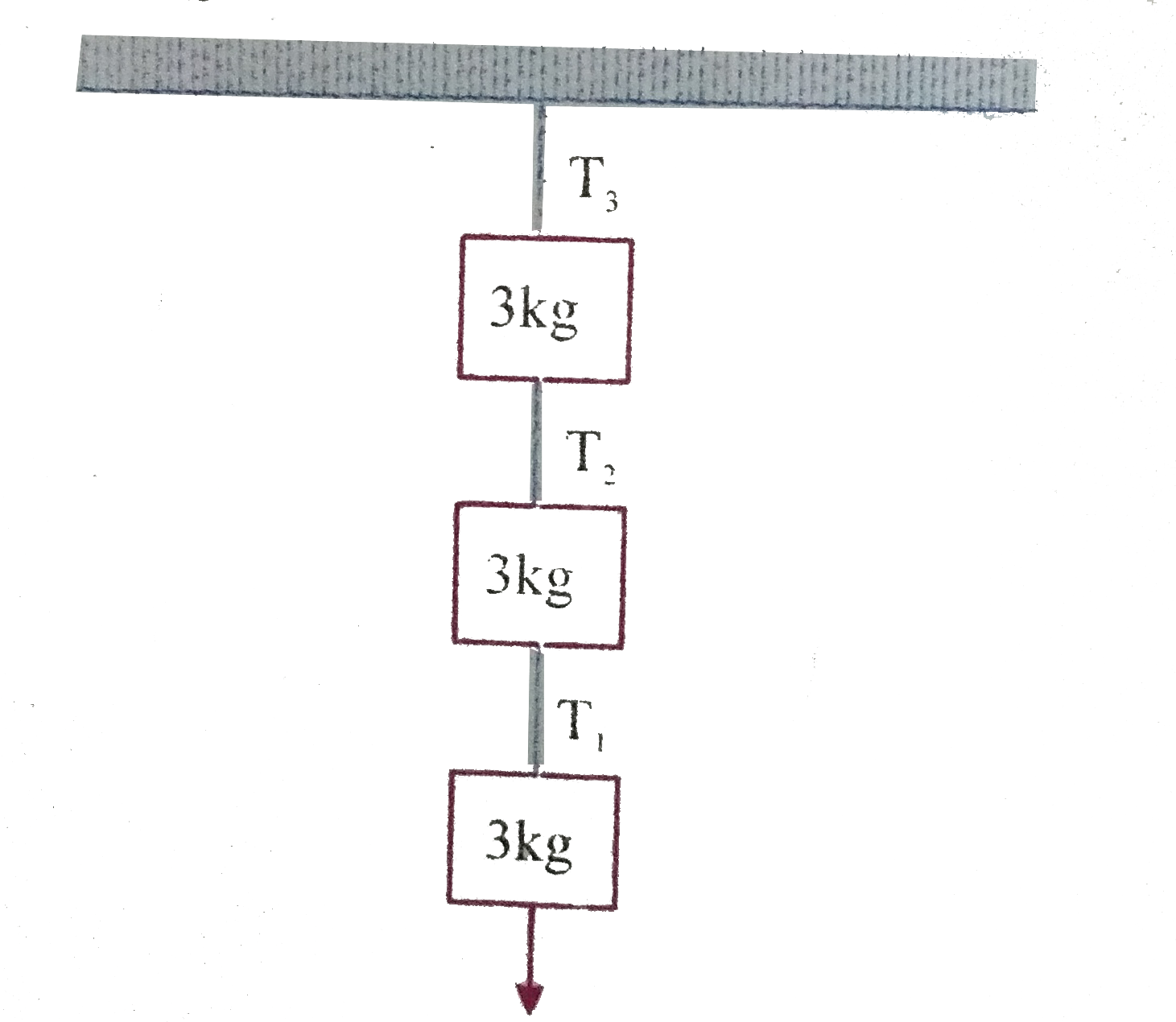
View SolutionPulleys and strings are massless.The horizontal surface is smooth.What is the acceleration of the block

View SolutionWhen a train starting from rest is uniformly accelerating, a plumb bob hanging from the roof of a compartment is found to be inclined at an angle of `45^(@)` with the vertical.The time taken by the train to travel a distance of `1//2km` will be nearly
View SolutionThe pulleys and strings shown in the figure are smooth and of negligible mass. For the system to remain in equilibrium, the angle `theta` should be
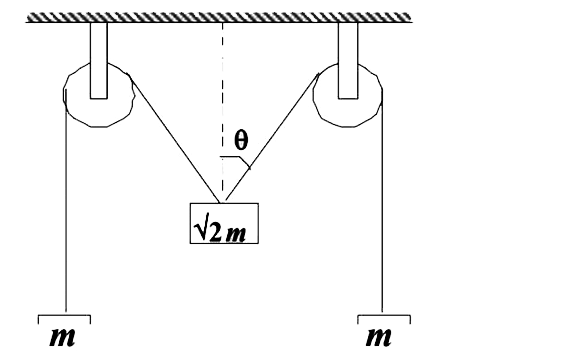
View SolutionTwo bodies of mass 4kg and 6kg are attached to the ends of a string passing over a pulley. The 4kg mass is attached to the table top by another string. The tension in this string `T_(1)` is equal to: Take
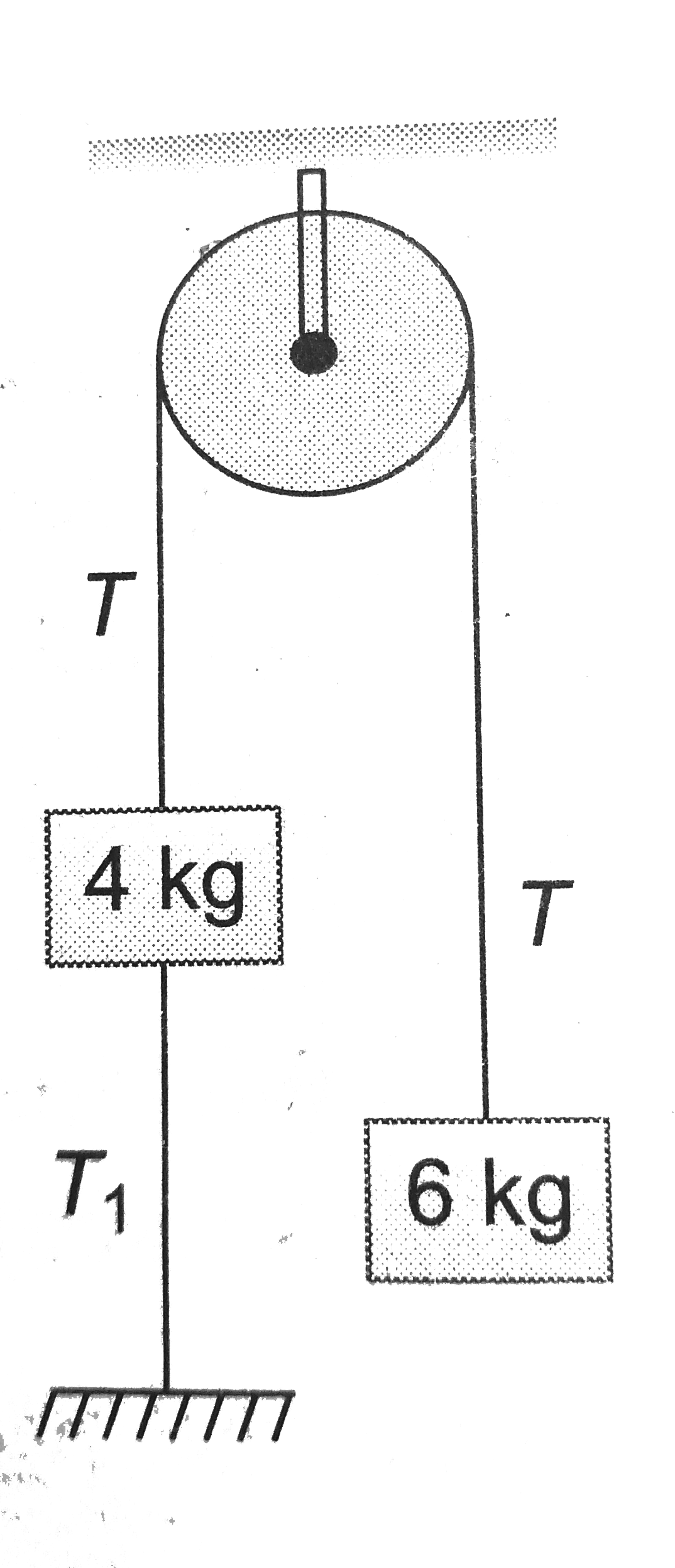
View SolutionAccelertion of block `m` is `(theta lt 45^(@))`
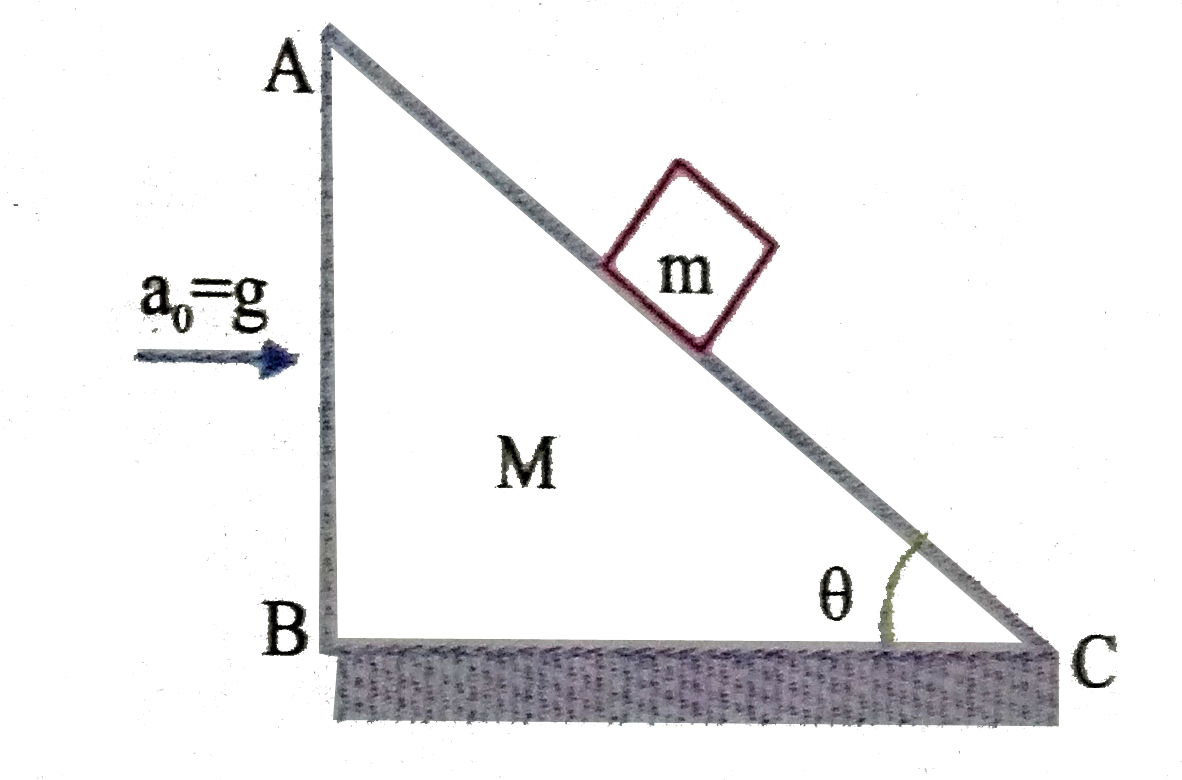
View SolutionA stationary shell breaks into three fragments The momentum of two of the fragments is `P` each and move at `60^(@)` to each other.The momentum of the third fragment is
View SolutionA body of mass `1kg` initially at rest explodes and breaks into three parts of masses in the ration ` 1: 1: 3.` If the two pieces of equal masses fly off perpendicular to each other with a speed of `30m//s` The speed of third piece will be .
View SolutionA man of `50 kg` is standing at one end on a boat of length `25m` and mass `200kg`.If he starts running and when he reaches the other end, has a velocity `2ms^(-1)` with respect to the boat.The final velocity of the boat is
View SolutionA stationary body of mass `3 kg` explodes into three equal pieces.Two of the pieces fly off at right angles to each other, one with a velocity `2hati m//s` and the other with a velocity `3hatj m//s`.If the explosion takes place in `10 sec`,the average force acting on the third place in Newtons is:
View SolutionA particle is placed at rest inside a hollow hemisphere of radius `R`. The coefficient of friction between the particle and the hemisphere is `mu = (1)/sqrt(3)`. The maximum height up to which the particle can remain stationary is
View SolutionA horizontal force is applied on a body on a rough horizontal surface produces an acceleration `a`.If coefficient of friction between the body and surface which is `a` is reduced to `mu//3`,the acceleration increses by `2 units`.The value of `mu` is
View SolutionA block of mass `4kg` is placed in contact with the front vertical surface of a lorry.The coefficient of friction between the vertical surface and block is `0.8`.The lorry is moving with an acceleration of `15m//s^(2)`.The force of friction between lorry and block is `(g=10ms^(-2))`
View SolutionA person of mass `72kg` sitting on ice pushes a block of mass of `30kg` on ice horizontally with a speed of `12ms^(-1)`.The coefficient of friction between the man and ice and between block and ice is `0.02`.If `g=10ms^(-1)`,the distance between man and the block, when they come to rest is
View SolutionConsider a `14-tyre` truck, whose only rear `8` wheels are power driven (means only these `8` wheels can produce an acceleration).These `8 wheels` are supporting approximately half of the load.If coefficient of friction between road and each type is `0.6`,then what could be the maximum attainable acceleration by the truck is
View SolutionA block is sliding on a rough horizontal surface. If the contact force on the block is `sqrt2` times the frictional force, the coefficient of friction is
View SolutionA block is sliding on a rough horizontal surface. If the contact force on the block is `sqrt2` times the frictional force, the coefficient of friction is
View SolutionA block of mass `2kg` is placed on the surface of trolley of mass `20kg` which is on a smooth surface.The coefficient of friction between the block and the surface of the trolley is `0.25`.If a horizontal force of `2 N` acts on the block, the acceleration of the system in `ms^(-2)` is `(g=10ms^(-2))`
View SolutionA man slides down on a telegraphic pole with an acceleration equal to one-fourth of acceleration due to gravity.The frictional force between man and pole is equal to (in terms of man's weight `W`)
View SolutionA box is placed on the floor of a truck moving with an acceleration of `7 ms^(2)`.If the coeffecient of kenetic friction between the box and surface of the truck is `0.5`,find the acceleration of the box relative to the truck
View SolutionA block is placed at a distance of `2m` from the rear on the floor of a truck `(g=10ms^(-2))`.When the truck moves with an acceleration of `8ms^(-2)` the block takes `2 sec` to fall off from the rear of the truck.The coefficient of sliding friction between truck and the block is
View SolutionSand is piled up on a horizontal ground in the form of a regualr cone of a fixed base of radius `R`.The coefficient of static friction between sand layers is `mu`.The maximum volume of sand that can be piled up, without the sand slipping on the surface is
View SolutionA body is allowed to slide from the top along a smooth inclined plane of length `5m` at an angle of inclination `30^(@)`.If `g=10ms^(-2)`, time taken by the body to reach the bottom of the plane is
View SolutionA body slides down a smooth inclined plane of height `h` and angle of inclination `30^(@)` reaching the bottom with a velocity `v`.Without changing the height, if the angle of inclination is doubled, the velocity with which it reaches the bottom of the plane is
View SolutionA body is projected up along an inclined plane from the bottom with speed is `2v`.If it reaches the bottom of the plane with a velocity `v`,if `theta` is the angle of inclination with the horizontal and `mu` be the coefficient of friction.
View SolutionThe minimum force required to move a body up on an inclined plane is three times the minimum force required to prevent it from sliding down the plane. If the coefficient of friction between the body and the inclined plane is `1/(2sqrt3)` the angle of the inclined plane is
View SolutionThe time taken by a body to slide down a rough `45^(@)` inclined plane is twice that required to slide down a smooth `45^(@)` inclined plane. The coefficient of kinetic friction between the object and rough plane is given by
View SolutionA body is sliding down a rough inclined plane The coefficient of friction between the body and the plane is `0.5`.The ratio of the net force required for the body to slide down and the normal reaction on the body is `1:2` Then the angle of the inclined plane is
View SolutionA body takes `1(1)/(3)` times as much time to slide down a rough inclined plane as it takes to slide down an identical but smooth inclined plane,If the angle of inclination is `45^(@)` find the coefficient of friction.
View SolutionA body is sliding down an inclined plane `(mu = (1)/(2))`. If the normal reaction is twice that of the resultant downward force along the incline , the inclination of plane is
View SolutionA box of mass `8 kg ` placed on a rough inclined plane of inclened `theta` its downward motion can be prevented by applying an upward pull `F` and it can be made to slide upward appliying a force `2F` .The coefficient of friction between the box and the inclined plane is
View SolutionA block of weight `100N` is lying on a rough horizontal surface.If coefficient of friction `1/sqrt3`.The least possible force that can move the block is
View SolutionA weight `W` rests on a rough horizontal plane,If the angle of friction is `theta`,the least force that can move the body along the plane will be
View SolutionA ball of mass `(m) 0.5 kg` is attached to the end of a string having length `(L) 0.5 m`. The ball is rotated on a horizontal circular path about vertical axis. The maximum tension that the string can bear is `324 N`. The maximum possible value of angular velocity of ball (in radian//s) is -
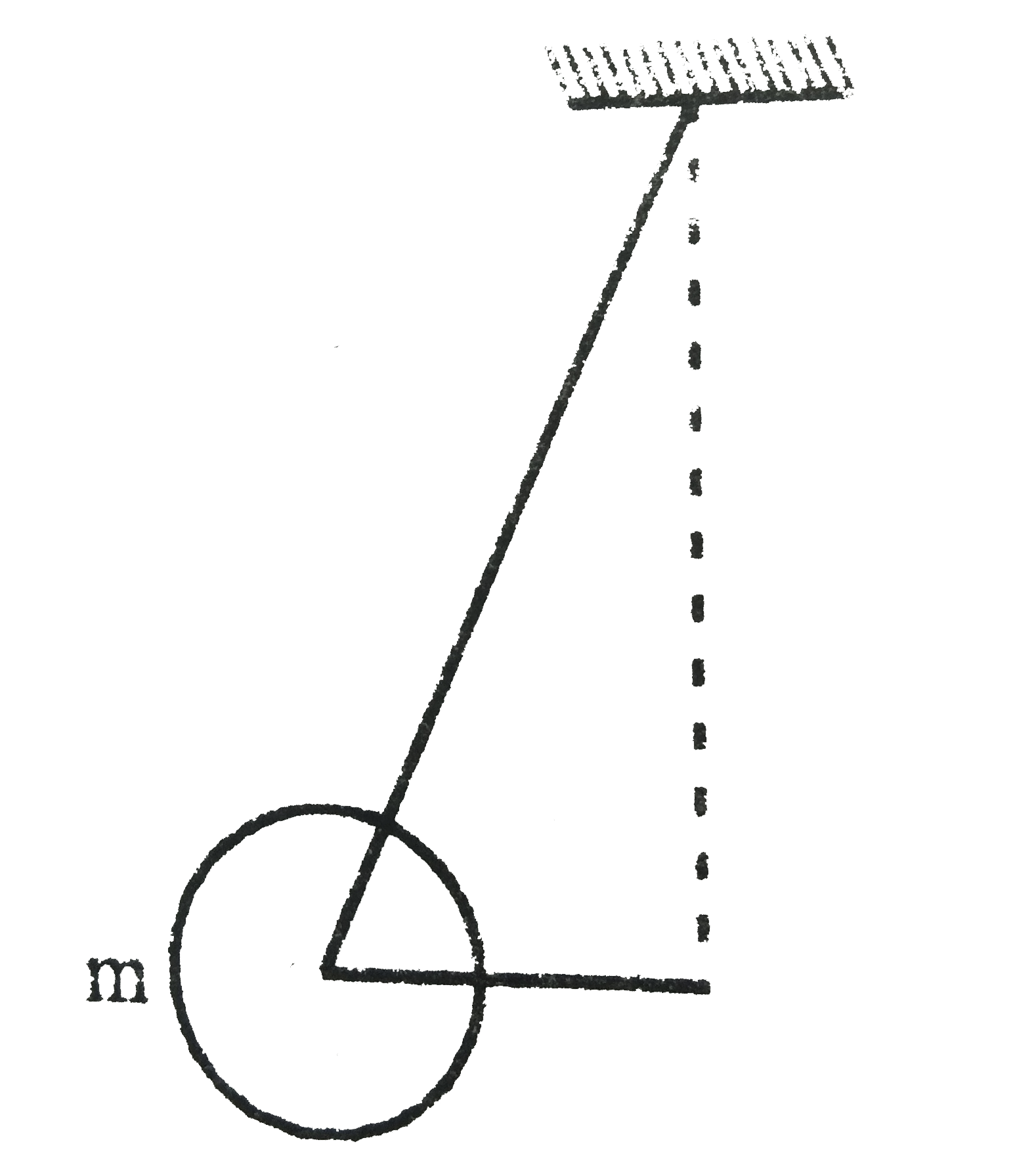 .
.
View SolutionA disc rotates at `60 rev//min` around a vertical axis.A body lies on the disc at the distance of `20cm` from the axis of rotation.What should be the minimum value of coefficient of friction between the body and the disc,so that the body will not slide off the disc
View SolutionA car is moving on a circular level road of curvature `300m` . If the coefficient of friction is `0.3` and acceleration due to gravity is `10m//s^(2)` , the maximum speed of the car be
View Solution
LEVEL II(H.W) questions and complete solutions for chapter CIRCULAR MOTION of NARAYANA PHYSICS (HINGLISH) of Class 11